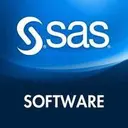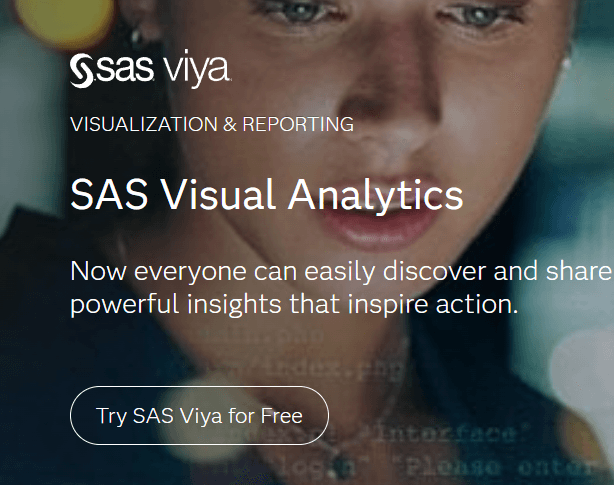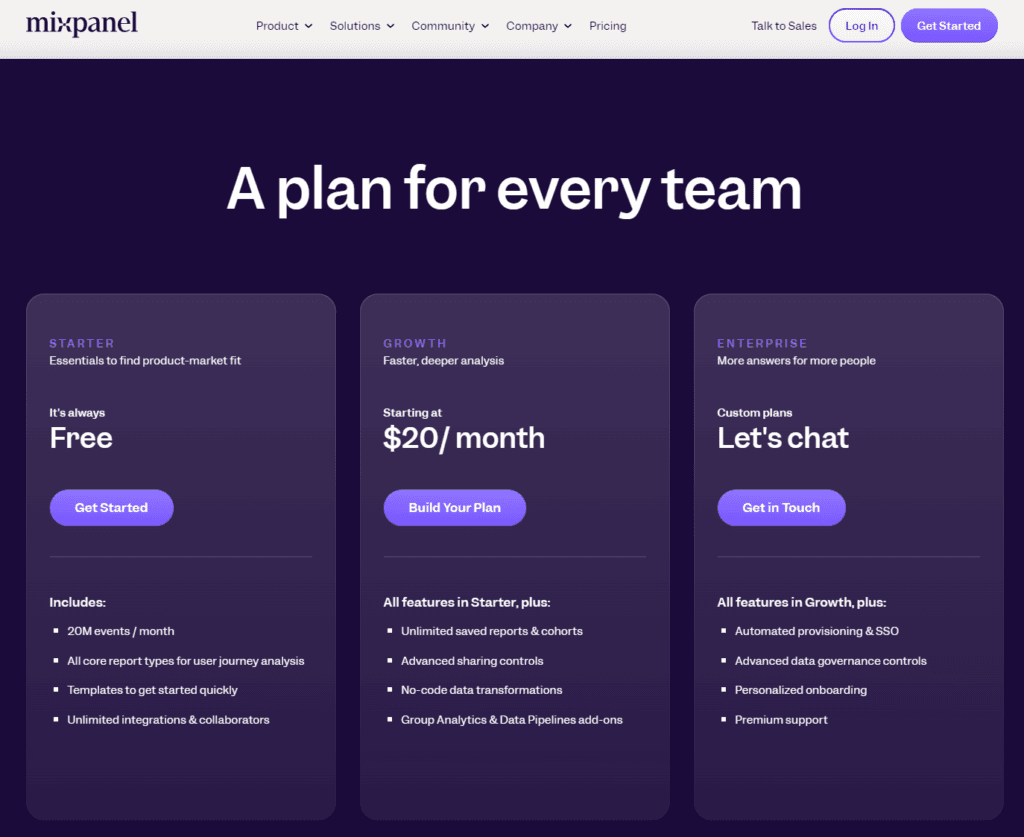In the sprawling universe of data analytics, where the stars of insight are obscured by the nebulae of raw data, two luminaries stand out, offering guidance to those who seek clarity: SAS Visual Analytics and Mixpanel. One, a comprehensive constellation designed for the data aficionado who delights in the deep dive of complex analytics. The other, a sleek comet tailored for the agile marketer, darting through user interactions with precision and speed. But which beacon will guide you to the treasure trove of insights you seek? Whether you’re charting the unknown depths of enterprise data or navigating the swift currents of user behavior analytics, this guide sets sail to discover “The Best Analytics Tool for You”.
| SAS Visual Analytics | Mixpanel |
|---|---|
 |  |
| G2 Score -4.4 out of 5 | G2 Score -4.6 out of 5 |
| TrustRadius Score -8.4 out of 10 | TrustRadius Score -8.5 out of 10 |
Area of Comparison: Data Integration Capabilities
SAS Visual Analytics: The Grand Navigator
SAS Visual Analytics stands as a venerable galleon, its sails billowing with the power to traverse the vast and varied oceans of data. It boasts formidable data integration capabilities, enabling organizations to harmonize disparate data sources into a coherent whole. From traditional databases and cloud storage solutions to unstructured data from web and social media platforms, SAS Visual Analytics can assimilate and process data at an enterprise scale.
This platform is a beacon for organizations that navigate through complex data waters, requiring a holistic view for in-depth analysis. Its strength lies in its ability to not just gather but also cleanse, transform, and prepare data for exploration, ensuring analysts work with accurate and comprehensive datasets.
Mixpanel: The Agile Scout
Mixpanel, in contrast, zips through the data seas like a swift scout ship, agile and precise. It specializes in integrating with digital products to collect detailed data on user interactions. With SDKs for web and mobile apps, along with integrations with popular tools and platforms, Mixpanel efficiently tracks events and user journeys, providing real-time insights into how users engage with digital products.
The strength of Mixpanel lies in its focus on user behavior data, making it an invaluable tool for SaaS companies, e-commerce platforms, and digital businesses. Its approach to data integration is designed for speed and relevance, enabling businesses to quickly understand user behavior and make informed decisions to enhance user experience and drive growth.
Pricing: SAS Visual Analytics vs Mixpanel
Venturing into the critical realm of Pricing, we encounter a decisive factor that can significantly sway the choice between SAS Visual Analytics and Mixpanel. The investment in an analytics tool is not merely about the initial cost but also involves considering the long-term value it brings to your organization. Let’s examine the pricing models of SAS Visual Analytics and Mixpanel to discern their financial implications and value propositions.
SAS Visual Analytics: Customized Enterprise Solutions

SAS Visual Analytics caters to a broad spectrum of enterprise-level analytics needs with a pricing model that reflects its comprehensive and powerful capabilities. The platform’s pricing is customized, taking into account factors like the size of the deployment, the range of features needed, and the level of support required. This bespoke approach ensures that organizations get a tailored solution that aligns with their specific analytical needs and objectives.
Given its enterprise focus, SAS Visual Analytics is typically associated with a significant investment. Organizations interested in leveraging this powerful analytics suite must engage directly with SAS for a customized quote, which can vary widely based on their unique requirements. This model underscores SAS Visual Analytics’ role as a premium, enterprise-grade tool designed for deep, strategic analytics across various domains.
Mixpanel: Transparent and Scalable Pricing

In contrast, Mixpanel offers a transparent and scalable pricing structure, designed to accommodate businesses of different sizes, from startups to large enterprises. The platform provides several pricing tiers, including a limited free version and various paid plans that scale based on the number of data points tracked. This transparent approach allows potential users to clearly understand the costs involved and select a plan that best suits their analytics needs and budget constraints.
Mixpanel’s pricing model is particularly appealing to fast-growing businesses and digital products, providing the flexibility to start small and scale as the organization’s data analytics requirements evolve. The platform’s cost-effectiveness and scalability make it a popular choice among startups and tech-savvy companies looking for robust user behavior analytics without a hefty price tag.
User Interface and Accessibility
Let’s outline how you might further expand on the comparison between SAS Visual Analytics and Mixpanel, focusing next on User Interface and Accessibility.
SAS Visual Analytics: The Sophisticated Explorer’s Chart
SAS Visual Analytics offers a sophisticated, feature-rich interface designed for users who require comprehensive analytical capabilities. Its interface is akin to an explorer’s detailed chart, offering numerous layers of information and sophisticated tools for deep data exploration. This platform is designed for users with a keen eye for detail and a deep understanding of data analytics, providing them with the tools to perform intricate analyses, create complex visualizations, and tailor dashboards to mirror the intricacies of their data landscape.
However, this level of sophistication can present a steep learning curve for newcomers or those with limited technical expertise. Organizations may need to invest in training to fully leverage the platform’s capabilities, making SAS Visual Analytics more suited to enterprises with dedicated analytics teams.
Mixpanel: The Agile Navigator’s Compass
Conversely, Mixpanel presents a streamlined and intuitive interface, emphasizing ease of use and quick access to insights. It’s like an agile navigator’s compass, guiding users directly to the insights they seek without unnecessary complexity. Designed with marketers, product managers, and UX designers in mind, Mixpanel enables users to easily track, analyze, and act on user interaction data without the need for extensive analytics training.
Mixpanel’s focus on user behavior analytics makes its interface particularly accessible for those looking to understand and improve digital product engagement. Its straightforward approach to data visualization and analysis ensures that actionable insights are readily available, enabling quick decision-making to enhance user experience and drive product growth.

Related: Check out our free SEO suite

Advanced Analytics and Machine Learning Capabilities
Moving forward in our comparative journey, let’s zero in on Advanced Analytics and Machine Learning Capabilities. The power to forecast future trends, understand complex patterns, and automate insights through machine learning models is increasingly critical in today’s data-driven landscape. Here’s how SAS Visual Analytics and Mixpanel stack up in these advanced territories.
SAS Visual Analytics: The Oracle of Data
SAS Visual Analytics is akin to an oracle in the realm of advanced analytics and machine learning, offering profound depth and breadth in its capabilities. It allows users to delve into predictive modeling, forecasting, text analytics, and decision trees, among others, all built upon SAS’s robust statistical foundation. This extensive toolkit enables organizations to not just understand what has happened but also to forecast future trends, identify opportunities, and mitigate risks with a high degree of precision.
Ideal for enterprises with complex analytical needs that span across multiple domains, SAS Visual Analytics offers a comprehensive set of tools. It supports data-driven decision-making with an array of advanced features, ensuring users can extract deep insights and predictive intelligence from their data, catering to those with a solid data science background.
Mixpanel: The Agile Predictor
In contrast, Mixpanel provides a more focused yet powerful set of tools designed for user behavior analytics and prediction. While it might not offer the same depth as SAS in terms of statistical modeling, Mixpanel excels in delivering actionable insights through its user tracking and analysis capabilities. It offers predictive features that help businesses anticipate user actions, segment users based on behavior, and identify patterns that can inform product development and marketing strategies.
Mixpanel’s strength lies in its ability to make advanced analytics accessible to non-data scientists, enabling marketers, product managers, and UX designers to leverage predictive insights to drive growth and improve user engagement. It democratizes access to advanced analytics, allowing a broader range of users to benefit from machine learning without the need for extensive statistical knowledge.
Customization Capabilities
Moving forward in our comparison between SAS Visual Analytics and Mixpanel, let’s explore Customization Capabilities. Customization is crucial in tailoring analytics tools to fit the unique needs of an organization, from dashboard configurations and report generation to the integration of specific data sources. The degree to which a platform allows customization can significantly impact its utility and adoption within an organization.
SAS Visual Analytics: The Master Tailor
SAS Visual Analytics is akin to a master tailor, offering an extensive suite of customization options that cater to the intricate needs of large enterprises and organizations with complex data landscapes. The platform allows users to design and tailor visualizations to meet specific analytical needs, ensuring insights are presented in the most impactful way.
The tool provides robust capabilities for generating detailed, customizable reports that can incorporate a wide range of data visualizations and analytics. SAS Visual Analytics supports the integration of various data sources, enabling organizations to bring together disparate data for comprehensive analysis.
The platform’s flexibility ensures it can be adapted to serve different departments and use cases within an organization, from marketing and sales to finance and operations. This level of customization makes SAS Visual Analytics a powerful solution for organizations that require deep, tailored analytics capabilities to inform strategic decision-making across multiple domains.
Mixpanel: The Agile Customizer
Mixpanel, while more focused in its scope, offers agile customization capabilities tailored to the needs of digital products and SaaS businesses. Mixpanel allows for the easy creation of customizable dashboards that highlight key metrics and trends relevant to user behavior and product performance. Businesses can define and track custom events that are specific to their product or service, enabling precise analysis of user interactions and engagement.
Users can segment data based on various criteria, such as user demographics or behavior, to derive targeted insights that can inform product development and marketing strategies. Mixpanel provides the option to set up personalized alerts and notifications based on specific data thresholds or events, ensuring that key insights are promptly acted upon. Mixpanel’s customization capabilities are designed to be user-friendly, enabling organizations to quickly adapt the platform to their specific analytical needs without extensive technical expertise.
Conclusion
As we conclude this comparison, remember that selecting the right analytics tool is just the beginning of your data-driven journey. The true voyage lies in harnessing these tools to uncover insights that propel your organization forward, informed by a deep understanding of your data and guided by strategic decision-making. Whether your choice is SAS Visual Analytics or Mixpanel, embracing a culture of analytics will illuminate your path to success in the complex, ever-evolving landscape of today’s digital world.
READ NEXT:
- Delivra vs ReachMail: The Best Email Marketing Tool for You
- SAS Visual Analytics vs Baremetrics: The Best Analytics Tool for You
- SAS Visual Analytics vs Zoho Analytics: The Best Analytics Tool for You
- SAS Visual Analytics vs Woopra: The Best Analytics Tool for You
- Friends+Me vs SmarterQueue: The Best Social Media Management Tool for You
- 11 Marketing Analytics Tools to Elevate Your Data-Driven Strategies
- 29+ Digital Analytics Software to Skyrocket Your Digital ROI






















Comments are closed.